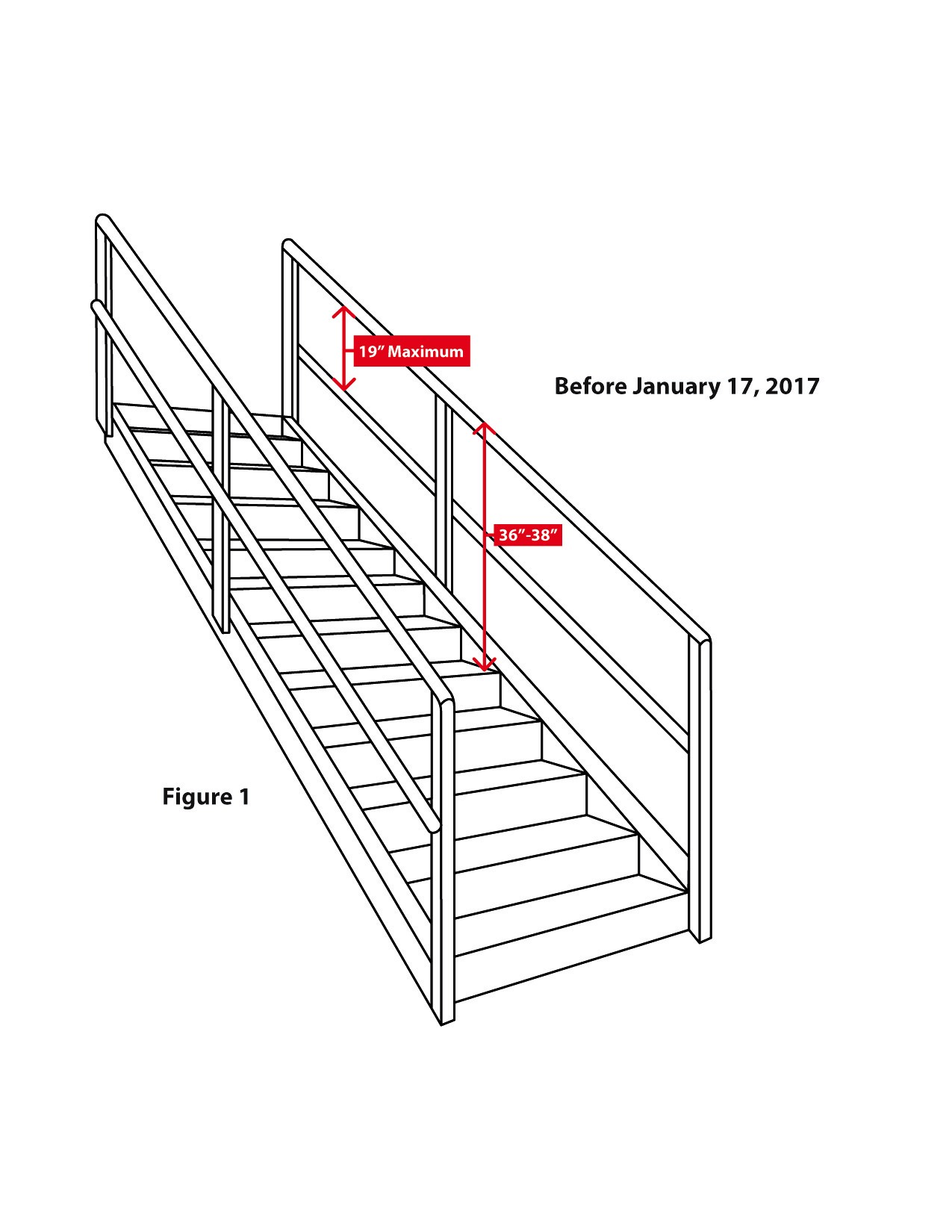

Wider staircases require handrails on both sides (exception: The 2010 NBC allows for a handrail on one side only in private dwellings). If guardrails are required to make a stair landing safe, the handrails can have a maximum height of 107 cm (42 in.).Ī single handrail is sufficient for stairways less than 110 cm (43.5 in.) wide.

The National Building Code sets the height of a handrail between 86.5 cm (34 in.) and 96.5 cm (38 in.). Outdoors, handrails are required for stairways that serve a single dwelling unit and have more than three risers. Handrails are required for interior stairways that serve a single dwelling unit and have more than two risers. The ends must not pose any danger to people with limited vision, children’s heads, or anyone wearing loose clothing or carrying cumbersome items. They must be at least 5 cm (2 in.) from any surface and not encroach on the required width of the stairwell by more than 10 cm (4 in.). Handrails must be easy to locate, provide continuous support, and be easy to hold on to. Tempered or laminated glass panes are permitted, provided they are manufactured in accordance with code safety requirements.
Stair rail code height free#
Otherwise, designers can give their imaginations free reign. It is also very important that guardrails not have any openings large enough for a spherical object 10 cm (4 in.) in diameter to fit through (e.g., a young child who might try to stick their head between two spindles). This means that the guardrail posts must be solidly anchored to the ground. Whether they are indoors or outdoors, guardrails must also be able to withstand loads and pressure, including a point side load of 0.5 kilonewtons (113 lb.). An exception applies to guardrails on decks that provide access to swimming pools.Ī minimum height of 90 cm (36 in.) applies to all guardrails inside private dwellings. If the deck surface is over 180 cm (6 ft.) from the finished floor, the guardrail must be at least 107 cm (42 in.) high. The guardrail must be at least 90 cm (36 in.) high. In Quebec, guardrails are mandatory when the surface of a deck is over 60 cm (2 ft.) above the finished floor. Here is some useful information for private dwellings: The experts at CAA-Quebec Residential Advisory Services can assist you in bringing your home up to code. The civil liability clause is an integral part of the basic home insurance policy and cannot be withdrawn.
:max_bytes(150000):strip_icc()/stair-handrail-and-guard-code-1822015-FINAL1-5c054b4dc9e77c0001600219.png)
Unlike with a “water damage” endorsement, for example, civil liability is at play here.
Stair rail code height install#
If not, you could be held liable if someone gets hurt or worse! Following an inspection, an insurer may decide to withdraw coverage and stop insuring your home if you refuse to install or modify a handrail or guardrail. Specialized companies and general contractors are usually aware of the code in effect, but if you want to do the work yourself, you must get up to speed on the regulations for guardrails and handrails. There are national codes (National Building Code) and provincial ones (Quebec Construction Code), but it’s best to check with your municipality to find out which version of the provincial code applies where you live and whether any specific bylaws also apply. At that point, you will have to bring them up to code. Municipalities tolerate “old” bannisters until you renovate (with some exceptions, including backyard pool access). They probably were when the house was built, but the codes are continually being updated.

If you own an older home, your guardrails and handrails may no longer be compliant with building codes. Bannister: A more colloquial term for both guardrails and handrails.A handrail is also part of a guardrail (where the user’s hand is placed). Handrail: Usually refers to a continuous railing along a wall next to a staircase.Guardrail: A barrier installed around the edge of a raised surface (balcony, mezzanine, or staircase) to prevent people from falling.Guardrails and handrails are mandatory and are subject to standards that regulate bannisters inside and outside your home to ensure your safety.įirst, let’s get the terminology straight:


 0 kommentar(er)
0 kommentar(er)
